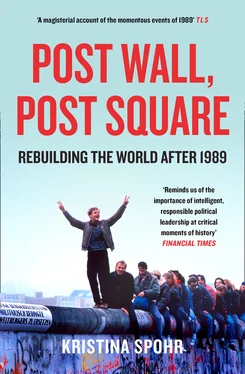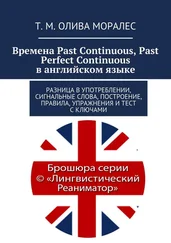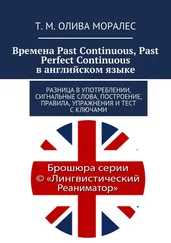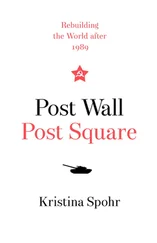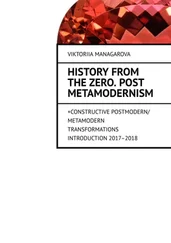*
Bush, who considered himself an expert on China, was keen to bring Beijing into a ‘Trans-Pacific Partnership’. ‘The importance of China is very clear to me,’ Bush told Brzezinski two weeks after his election. ‘I’d love to return to China before Deng leaves office entirely. I feel I have a special relationship there.’[51] Deng Xiaoping was the mastermind of China’s policies of ‘reform and opening up’ – the drive after Mao Zedong’s death in 1976 to abandon the autarkic planned economy and cautiously enter the global market. By 1989 the diminutive Deng was eighty-four and Bush was anxious to exploit their unusually long-standing personal relationship, which dated back to Bush’s quasi-ambassadorship to China in 1974–5. For Bush, China meant Deng. The president’s fascination with China had less to do with the country per se (its language, landscape or culture) than with its social and economic potential that Deng was in the process of unleashing into the global capitalist economy. Conversely, the Chinese referred to Bush as a lao pengyou – their term for a really trusted ‘old friend’ who is committed to building positive relations and acting as interlocutor between the People’s Republic of China (PRC) and the wider world but who also enjoys a special confidence that permits plain speaking. Those Americans before Bush who had earned such a distinction included Nixon and Kissinger; but neither Carter nor Reagan were considered a lao pengyou .[52]
China’s new course, promoted by Deng from 1978, was one of the transitional moments of the twentieth century. Under his leadership Beijing promoted rapid modernisation through greater engagement in an increasingly interdependent world, particularly with technologically advanced Western Europe and America. Domestically, measures were introduced to make policy more responsive to economic incentives. These included the decollectivisation of agriculture, allowing farmers to make profits; rewards for especially efficient industrial performance; and the promotion of small-scale private business. With an eye on both the global economy and the international power balance, Deng gradually relaxed controls on foreign investment and trade and sought membership of global financial institutions. His stated aim was to accomplish before the end of the century a total socio-economic transformation of his country, which in the 1980s ranked among the poorest third of states in the world. By the time Bush was elected president Deng’s gamble was already paying off. In just over one decade of reform, China’s GDP more than doubled from $150 billion in 1978 to over $310 billion in 1988.[53]
The world’s most populous country was in the throes of an economic revolution which, unlike Soviet Russia under Gorbachev, was very tightly managed by the Chinese Communist Party (CCP) and which also advanced step by step. Not only did Gorbachev’s economic liberalisation begin much later, in 1985 rather 1978, but the concomitant political reforms, which gradually dismantled the Soviet Communist Party’s monopoly on power, amounted to nothing less than a new system of governance. This process in turn stirred up destructive ethnic conflicts in what was a much less homogeneous society than China’s. Whereas in the PRC the process of economic reform was controlled from above, in the USSR perestroika combined with glasnost would eventually undermine the Soviet state.[54]
In the course of this Chinese revolution, the United States played a major role. Although Deng was initially keen to engage with Western Europe, America represented his ultimate model, especially after his eye-opening visit in early 1979 to mark the opening of full diplomatic relations: ‘what he saw in the United States was what he wanted for China in the future’. During a week’s whirlwind tour from Washington DC to Seattle, America’s factories and farms simply ‘bowled him over’. So impressive was US technology and productivity that, by his own admission, Deng could not sleep for several weeks.[55]
The Carter administration was keen for Deng’s reforms to succeed; it also wanted to pull China closer to the USA at a time when détente was eroding and the relationship with Moscow had slipped into a deep freeze amid the ‘New Cold War’. Not only did Carter normalise diplomatic relations with China but he granted ‘most favoured nation’ (MFN) status twelve months later – a crucial precondition for expanded bilateral trade. The PRC joined the World Bank in April 1980, the same month that it took over from Taiwan China’s place on the IMF. Accelerating the momentum, in September 1980 the Carter administration concluded four commercial agreements: on aviation, shipping, textiles and expanded consular representation. Announcing these, Carter called the Sino-American relationship ‘a new and vital force for peace and stability in the international scene’ which held ‘a promise of ever-increasing benefits in trade and other exchanges’ for both countries.[56]
Reagan took up Carter’s policy and pursued it with even greater vigour. One of the priorities of his new ‘global strategy’ was the integration of the Pacific Rim into the world economy. Within that enlarged market, China was potentially the biggest player, so its successful opening up would offer exceptional opportunities for US trade and investment. There was also a strategic dimension. The drive for economic modernisation would align China with the capitalist order and make it a more robust bulwark against the Soviet Union. In this vein, the Reagan administration offered Deng in 1981 a ‘strategic association’ with the USA – effectively a de facto alliance. So at a time when Cold War tensions ratcheted up, Sino-American security cooperation expanded. Beijing got US weapons technology, while coordinating with the American anti-communist campaigns in Afghanistan, Angola and Cambodia.[57] Although Reagan himself visited China in 1984, he was happy to make as much use as possible of his vice president’s old-friend status with the Chinese. Bush paid two week-long visits to Beijing in May 1982 and October 1985. On the second occasion he was particularly bullish about Sino-American trade: ‘The sky’s the limit, the door’s wide open,’ he told a news conference, adding that he found ‘much more openness’ now than three years before. Of course, continued progress depended on the Paramount Leader, now eighty-one. Observers were keenly aware that, in the interval between Bush’s first and second trips to China, three gerontocrats had passed from the scene in the Kremlin. But Bush cheerfully told the press of Deng’s words to him: ‘The vital organs of my body are functioning very well.’[58]
The evolving Sino-American relationship was proving a win-win situation. In 1983, the Reagan administration had taken the crucial step of liberalising Cold War controls on trade, technology and investment, allowing the private sector to engage with China at minimal cost to the American taxpayer. Deng, for his part, was desperate to tap every kind of American know-how. Between 1982 and 1984 export licences doubled and sales of high-tech goods such as computers, semiconductors, hydro-turbines and equipment for the petrochemical industry rose sevenfold from $144 million in 1982 to $1 billion in 1986.[59] Out of this grew American joint ventures with China, in areas such as energy exploration, transport and electronics. Consumer goods were another important sector for collaboration, with Coke and Pepsi, Heinz, AT&T, Bell South, American Express and Eastman Kodak among the high-profile US corporations represented.[60] In all these ways the US government acted as low-cost facilitator and gatekeeper for American private enterprise, using natural market forces to try to draw China out of its old shell during the course of the 1980s. In a dozen years of reform. Beijing and Washington became significant trading partners: US–China bilateral trade grew from $374 million in 1977 to nearly $18 billion in 1989.[61]
Читать дальше
